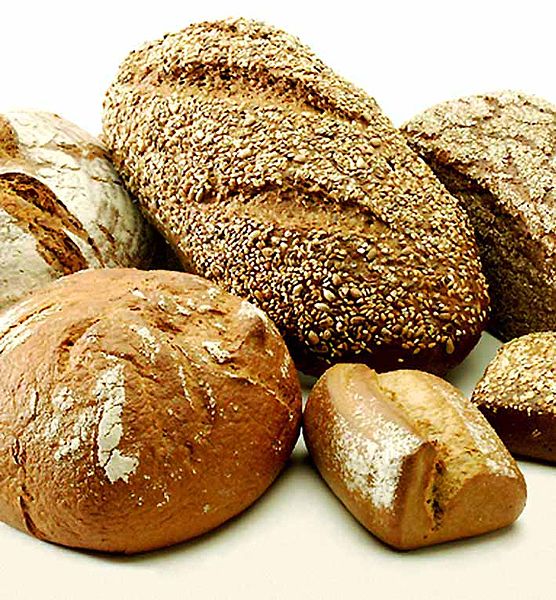Food
Recipes for paska, hot cross buns and Italian Easter bread
Here are some recipes so that you can try your hand at baking traditional homemade Easter breads.
Lovella’s Paska
Lovella Schellenberg of Abbotsford, B.C., says the aroma of this bread is “just amazing.” The recipe makes enough for four or five loaf pans or you can free-form little twists or use muffin tins, but you have to adjust the baking time and watch the oven closely.
30 ml (2 tbsp) active dry yeast
5 ml (1 tsp) sugar
250 ml (1 cup) warm water
1 medium lemon
1 medium orange
300 ml (1 1/4 cups) milk
125 ml (1/2 cup) butter
2 large eggs
175 ml (3/4 cup) sugar
5 ml (1 tsp) salt
About 1.75 l (7 cups) flour
Paska Icing
250 ml (1 cup) soft butter
4 egg whites
10 ml (2 tsp) vanilla
Icing sugar (enough to make a soft icing)
Coloured sugar, for garnish
In a large bowl, combine yeast, sugar and water. Let sit for 10 minutes. (If it doesn’t foam and bubble up, your yeast is old or expired. Start again with new yeast.)
Using a vegetable peeler, thinly slice peel of lemon and orange, avoiding white pith, and place in a blender. Chop lemon and orange, removing seeds. Add chopped fruit to blender.
In a microwave-safe bowl or in a saucepan on stove, heat milk and butter until butter melts. Add to fruit in blender and puree on high for 2 or 3 minutes.
Add eggs, sugar and salt. Continue to run blender for another minute or two until mixture is very smooth.
Measure milk-citrus and sugar mixture. It should be about 1.125 l (4 1/2 cups). If you have a bit more or less that is fine; you can adjust flour accordingly.
Pour mixture, along with yeast mixture, into a large bowl or bowl of a stand mixer with a dough hook. Add flour, 250 ml (1 cup) at a time, until you have a smooth soft, sticky dough. About 1.75 l (7 cups) of flour should be right, but it will depend on the size of the eggs and of the lemon and orange. With a plastic bowl it is easy to tell when dough has enough flour because it will stop sticking to the side of the bowl, but with a metal bowl, stop mixer often and touch dough before adding more flour. Once it gets close, stop machine and knead in last bit of flour by hand, a little at a time, until dough is smooth. Do not add more than 1.875 (7 1/2 cups) flour.
After kneading dough by hand or with machine for 8 to 10 minutes, transfer to a large bowl, cover with plastic wrap and a tea towel and let rise until doubled. This should take 1 to 1 1/2 hours. Punch it down and let rest for at least 10 minutes or up to another hour.
Spray pans with cooking spray. Divide dough among pans and let rise until doubled in bulk, 1 to 1 1/2 hours.
Meanwhile, heat oven to 180 C (350 F). Bake loaves for about 20 minutes, depending on pan size. Remove from oven and let cool on racks. Wrap loaves and freeze unless eating the same day.
Icing: In a bowl, beat together butter, egg whites, vanilla and icing sugar until light and smooth. Spread on each loaf. Sprinkle with coloured sugar.
Makes 4 or 5 loaves.
Source: Lovella Schellenberg, www.mennonitegirlscancook.ca.
___
Hot Cross Buns
These buns are most commonly seen at Easter but are sold in some stores year-round. They originated in Great Britain centuries ago and are perfect with a cup of tea. Formed into small loaves and sliced, they also make great toast.
25 ml (5 tsp) yeast
15 ml (1 tbsp) sugar
175 ml (3/4 cup) warm water
175 ml (3/4 cup) milk
75 ml (1/3 cup) butter
75 ml (1/3 cup) sugar
3 eggs
1.125 to 1.25 (4 1/2 to 5 cups) flour, divided
500 ml (2 cups) candied diced fruit (sometimes called Glace Cake Mix and found in grocery baking aisle)
5 ml (1 tsp) ground nutmeg
10 ml (2 tsp) vanilla
In a large bowl, mix together yeast, 15 ml (1 tbsp) sugar and warm water and let sit for 10 minutes until yeast has foamed and bubbled up.
In a microwave-safe bowl, heat milk and butter until butter begins to melt.
Add 75 ml (1/3 cup) sugar and eggs to yeast mixture, followed by milk-butter mixture, which should be warm but not hot to touch.
Mix 250 ml (1 cup) of the flour with candied fruit and stir well.
Add remaining flour, nutmeg and vanilla to liquid ingredients, then add fruit-flour mixture. Knead until it forms a ball but don’t over-knead. It should come together, but it will still be sticky because of the fruit. Knead using a bit of additional flour for a few minutes more.
Put into a bowl large enough for it to double in size. Cover with plastic wrap and set in a warm place to rise. Once it has doubled, form into buns and place in 2 greased 33-by-23-cm (13-by-9-inch) pans. With a very sharp knife, cut an X across each bun. Cover with a tea towel and let rise until doubled and very light.
Meanwhile, heat oven to 160 C (325 F) for a convection oven or 180 C (350 F) for a regular oven and bake for 15 minutes or until golden brown.
Once cooled, pipe your favourite butter icing into Xs across each bun.
Makes 24 buns.
Source: Lovella Schellenberg (www.mennonitegirlscancook.ca).
___
Romanian Easter Bread (Pascha)
This yeast egg bread is very sweet, very rich and a traditional favourite for Easter.
300 ml (1 1/4 cups) milk, divided
875 ml (3 1/2 cups) plus 37 ml (2 1/2 tbsp) all-purpose flour
1 pkg active dry yeast
4 large egg yolks
175 ml (3/4 cup) icing sugar
125 g (4 oz) light or dark raisins
Zest of 1 lemon
125 ml (1/2 cup) melted butter
15 ml (1 tbsp) dark rum (or any colour)
5 ml (1 tsp) vanilla extract
15 ml (1 tbsp) canola, corn or olive oil (olive is preferred)
Cheese Filling
500 g (1 lb) dry curd, drained and pressed cottage cheese or ricotta
30 ml (2 tbsp) soft butter
50 ml (1/4 cup) sugar
3 large egg yolks
15 ml (1 tbsp) flour
1 ml (1/4 tsp) vanilla
Pinch salt
Scald 125 ml (1/2 cup) of the milk and stir in 37 ml (2 1/2 tbsp) flour until smooth. Let cool for 10 minutes.
Heat another 125 ml (1/2 cup) milk until lukewarm. Do not scald. Place yeast in a small bowl and pour lukewarm milk over, stirring until dissolved. Add yeast mixture to flour paste and beat until air bubbles appear. Cover and let rise for at least 15 minutes.
Heat remaining 50 ml (1/4 cup) milk to lukewarm. Pour into a large bowl. Stirring after each ingredient, add egg yolks, sugar, raisins, yeast mixture, zest and 875 ml (3 1/2 cups) flour. Knead for about 10 minutes if you are using a machine or 15 to 20 minutes with buttered hands. Add melted butter as necessary to achieve a non-sticky, pliable moist ball of dough.
Add rum, vanilla and oil and knead for another 2 to 3 minutes. Cover bowl and let rise until dough doubles in size. Punch down and knead for another 5 to 10 minutes.
Heat oven to 180 C (350 F). Coat a round pan that is at least 7.5 cm (3 inches) deep with cooking spray. Cut off one-third of dough. With remaining two-thirds, line bottom and part of sides with dough. Divide one-third piece of dough into 3 and roll each into a rope. Braid 3 ropes and set braid around top of dough already in pan. Or divide dough into 2 ropes and twist together before putting in pan. Let dough rise until it reaches top of pan.
Cheese filling: Beat cheese with mixer and add butter, sugar, 2 of the egg yolks, 15 ml (1 tbsp) flour, vanilla and salt. Beat until smooth.
When dough has risen, place cheese mixture into centre. (Do not let it spill over edges.)
Beat remaining egg yolk and baste cheese filling and dough border with it.
Bake in a 180 C (350 F) oven for 1 hour or until a toothpick tests clean or an instant-read thermometer registers 88 C (190 F).
Remove from pan and let cool on a wire rack.
Makes 1 loaf.
Source: Doug Avram of Aylmer, Ont.
___
Traditional Italian Easter Bread (Pane di Pasqua)
Some Italian Easter breads are sweet, like a brioche or a pannetone in the shape of a dove. This recipe is for a plain bread, but it is the presentation that makes it special. The recipe can easily be halved.
5 ml (1 tsp) sugar
500 ml (2 cups) warm water
30 ml (2 tbsp) dry active yeast (2 packets)
1.5 kg (3 lb) bread flour (also called hard-wheat flour)
1.5 kg (3 lb) all-purpose flour
60 ml (4 tbsp) salt (kosher preferred)
1.25 l (5 cups) warm water
50 ml (1/4 cup) vegetable oil (optional)
Whole washed raw eggs
In a measuring cup or bowl, mix sugar, warm water and yeast. Let sit and activate. It’s ready when surface is covered with bubbles.
Meanwhile, mix together flour and salt in a mixer bowl. Add activated yeast-water mixture and 1.25 l (5 cups) water and mix for 2 to 3 minutes. Add oil, if desired, to make dough smoother and allow dough to release easily from the side of the bowl. Knead dough until smooth and elastic.
Cover bowl with a towel or lid and let dough rise until it doubles in size. Place bowl in a draft-free area so it stays at room temperature. If you want to hurry your rising process along, put bowl in oven with door closed but heat off or fill a sink with a few centimetres (inches) of warm water and place bowl, covered by a towel, in water.
When dough has risen, punch down and remove from bowl onto a lightly floured wooden board. To make basic shape that weaves in 1 egg, cut off 2 pieces of dough about the same size (about 150-g/5-oz pieces). Roll pieces out into ropes about 2.5 cm (1 inch) thick using fingers and palms. While rolling, if you feel any large air bubbles in dough pierce them with a knife. If you find you have too much flour on your hands and board, which can make rolling difficult, lightly wet hands to get a better grip.
Be sure eggs are washed and completely dry before putting together loaves. While working on each loaf, keep remaining dough covered with plastic wrap to keep it moist.
To make loaf, take first rope and loop dough in a U shape. Nestle egg, standing upright, in centre of loop, right in curve. Fold dough over itself, as if creating a braid, and making sure egg is tightly wound in dough. Create one or two more twists depending on length of dough ropes.
Roll second rope out slightly thinner, then lay it on top of first piece, creating a second U around egg. Again, fold dough over itself to create a twist and then a second twist. Pinch off ends and meld into bottom piece. You can use a dab of water to make 2 ropes stick together at ends or underneath twists.
Place on a baking sheet (the one you will use to bake them) to let them proof.
A similar shape can be created with 2 eggs. In this case, use 2 slightly larger pieces of dough to roll out into ropes. Make U shape with first rope and nestle first egg into curve. Twist rope twice, making sure egg is snug in dough. Place a second egg against second loop and make a third loop around it. Repeat with upper rope of dough.
To make a wreath shape, use even larger pieces of dough. Create a long twisted rope of dough with 4 or 5 eggs. Once base rope, with eggs, is complete, move it into a large circle and pinch ends together to complete that circle. A longer second rope can now be woven around the top of the wreath, twisting it between the eggs.
Let loaves rise, covered by towel, until almost doubled in size.
Heat oven to 200 C (400 F) and bake for 20 to 30 minutes, depending on oven, turning baking sheet at halfway mark, until bread is lightly golden and sounds hollow inside when tapped. The smaller one-egg twists will take closer to 20 minutes and the larger wreaths closer to 30. The eggs will also have baked.
Makes about 12 single twists or 3 full wreaths.
Source: Laura D’Amelio, www.anitaliancanadianlife.ca.






















